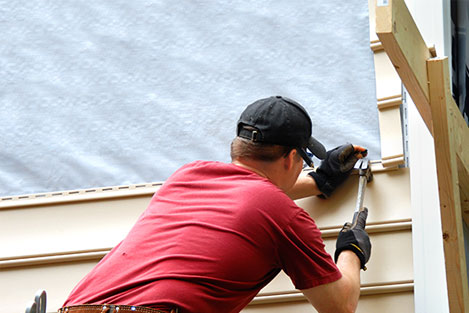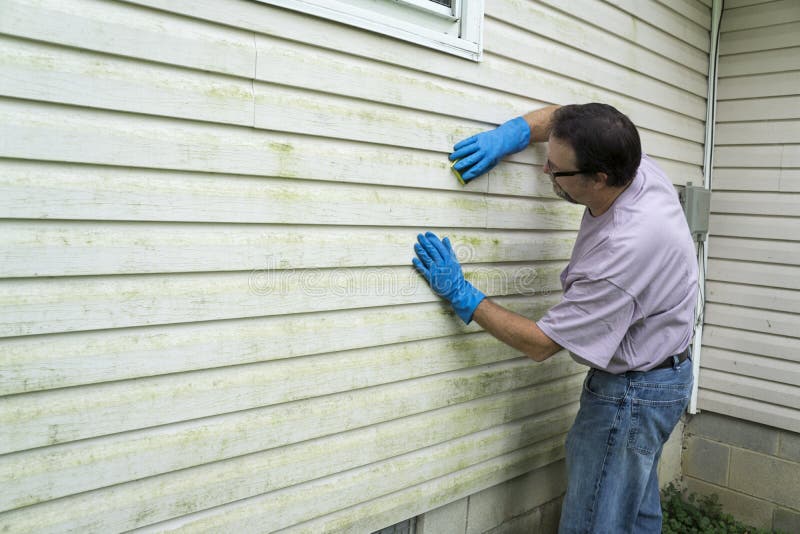Morris Siding Contractor with Years of Expertise in Home Exterior Upgrades
Morris Siding Contractor with Years of Expertise in Home Exterior Upgrades
Blog Article
The Important Guide to the Different Types of Exterior Siding and Their Special Benefits
In the world of home renovation, selecting the appropriate home siding is an essential choice that impacts both visual allure and useful performance. With so lots of alternatives to think about, which house siding material really stands out for your details job?
Wood Exterior Siding
Timber exterior siding, a preferred selection for household exteriors, provides an ageless aesthetic that combines natural charm with architectural stability. This house siding product is readily available in numerous designs, including clapboard, tiles, and board-and-batten, enabling house owners to tailor their façade to match their style preferences. Timber exterior siding is usually crafted from sturdy types such as cedar, redwood, or want, which are known for their resilience and ability to stand up to ecological stressors.
Among the main advantages of timber home siding is its superb insulation residential or commercial properties, which can contribute to energy effectiveness and lower heating prices. Additionally, wood siding is naturally degradable, making it an eco friendly alternative when sourced sustainably. Normal maintenance, including paint or discoloration, can extend its life expectancy and improve its appearance, permitting house owners to preserve the all-natural charm of the timber.
Nonetheless, possible disadvantages include susceptibility to insects, rot, and climate damages, demanding adequate treatment and upkeep - morris siding contractor. Regardless of these issues, when correctly cared for, timber siding can supply a lovely and sturdy solution that improves the character of a home while offering a warm, inviting ambience

Plastic Home Siding
Plastic siding has actually become a leading selection for homeowners seeking a low-maintenance outside choice that integrates durability and price. This functional product is crafted from polyvinyl chloride (PVC), making it resistant to various weather, consisting of moisture and UV rays. Because of this, plastic home siding does not warp, rot, or fade, making sure resilient visual allure.
One of the main advantages of plastic siding is its substantial variety of designs and colors, allowing homeowners to accomplish the preferred appearance for their home without the need for frequent repainting. Additionally, vinyl exterior siding is very easy to set up, which can considerably decrease labor costs during building or improvement projects.
Plastic exterior siding likewise adds to power performance. Several alternatives feature insulation backing, which enhances thermal performance, assisting to keep comfy interior temperatures and possibly decreasing power bills. In addition, its smooth surface promotes very easy cleansing, needing only periodic cleaning with a yard pipe to eliminate dust and debris.
Fiber Cement House Siding
Fiber cement home siding has actually obtained traction amongst property owners and builders alike because of its impressive combination of toughness and visual adaptability. Made up of a mix of sand, cement, and cellulose fibers, this house siding choice is crafted to stand up to extreme climate condition, consisting of high winds, hefty rainfall, and temperature fluctuations, making it a durable selection for residential exteriors.

One of the primary advantages of fiber concrete home siding is its resistance click for source to parasites, such as termites, and its non-combustible nature, offering enhanced fire safety and security. morris siding contractor. Additionally, it is offered in a large selection of designs, textures, and shades, allowing property owners to attain their preferred aesthetic without giving up efficiency
An additional advantage is its low upkeep requirements; fiber concrete siding usually calls for paint or staining every 5-10 years, which is much less frequent than various other materials. Its long life contributes to a reduced total cost of possession, as it decreases the need for frequent repair work or replacements.
Inevitably, fiber cement siding represents an outstanding investment for those seeking a durable, attractive, and flexible exterior choice, incorporating both type and function to enhance the home's aesthetic allure.
Metal Home Siding
The attraction of metal exterior siding depends on its robust resilience and modern-day visual charm, making it a preferred option for modern architecture. Readily available in products such as light weight aluminum and steel, steel siding uses a variety of shades and coatings, permitting home owners to attain a customized look that enhances their layout vision.

Power efficiency is another considerable advantage, as numerous metal house siding items are developed with insulation check choices that help control interior temperatures. This can bring about lowered power prices with time. Furthermore, steel exterior siding is frequently recyclable, making it an eco-friendly choice for sustainability-minded property owners.
The setup process for steel house siding can be relatively simple, causing a quicker turnaround time for building and construction jobs. On the whole, metal siding integrates capability and design, making it a functional choice for their website those looking for a aesthetically appealing and enduring outside surface.
Brick and Rock Home Siding
Block and rock house siding sticks out as a timeless choice that enhances the aesthetic appeal of any kind of home. Known for their sturdiness and reduced maintenance, these materials give an extraordinary roi while raising the residential or commercial property's curb allure. Readily available in various colors, textures, and patterns, brick and rock can be tailored to suit varied building designs, from typical to contemporary.
One of the primary advantages of brick and stone home siding is their energy performance. Both materials have natural insulating buildings that assist regulate interior temperatures, possibly reducing heating & cooling expenses. Additionally, they offer superior fire resistance compared to other house siding alternatives, adding to boosted safety and security.
One more benefit is their long life. Brick and rock can last for years, commonly needing very little upkeep beyond periodic cleaning. Unlike wood exterior siding, they are resistant to parasites and rot, making sure a durable outside that endures the aspects.
Conclusion
In recap, the choice of home siding substantially affects a home's aesthetic allure, energy performance, and upkeep demands. Each type of house siding-- whether timber, vinyl, fiber concrete, brick, or steel and stone-- offers special benefits customized to numerous house owner preferences and environmental conditions.
One of the main advantages of wood exterior siding is its superb insulation residential or commercial properties, which can contribute to energy performance and reduced heating prices. Additionally, wood home siding is biodegradable, making it an eco pleasant choice when sourced sustainably.One of the main advantages of metal siding is its resistance to various environmental aspects.Energy performance is another substantial advantage, as several steel home siding products are made with insulation options that aid regulate interior temperatures. Each type of house siding-- whether wood, vinyl, fiber block, cement, or steel and stone-- uses special benefits tailored to various home owner preferences and ecological conditions.
Report this page